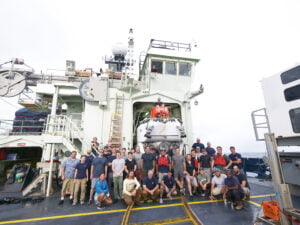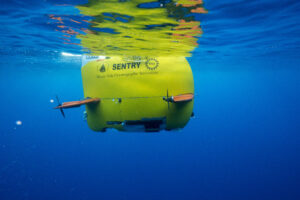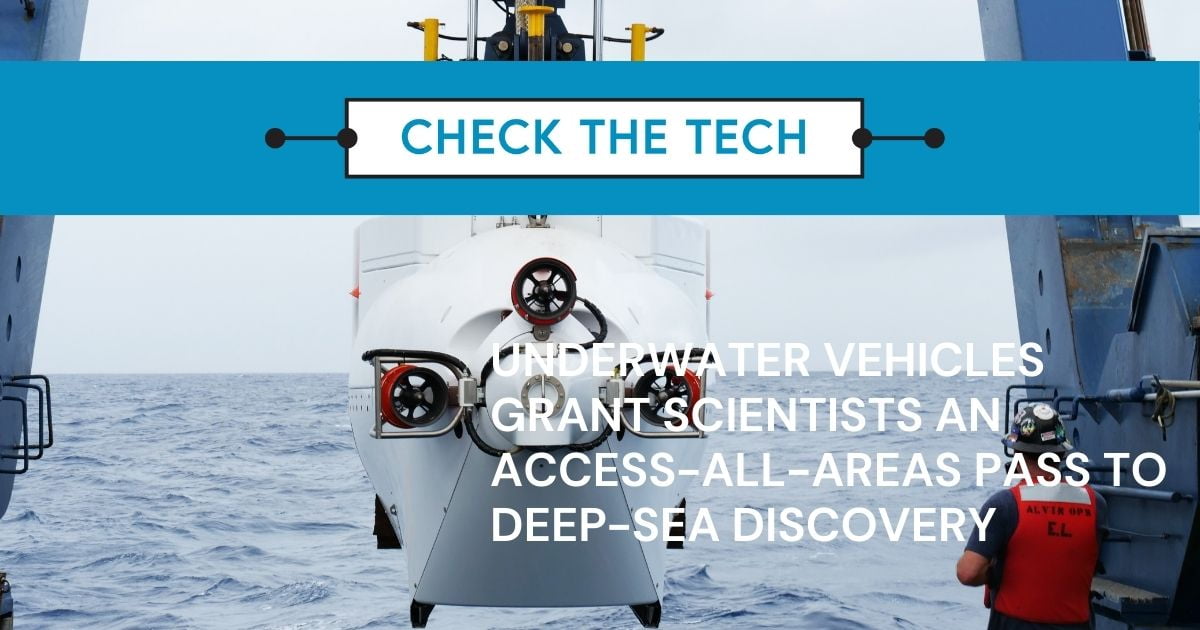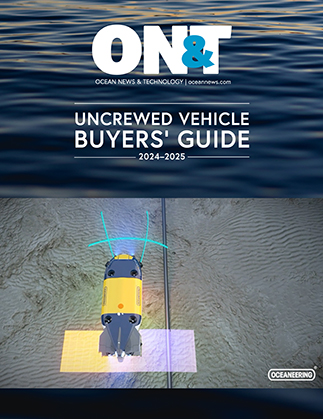The ocean is crucial to life on Earth, yet it remains remarkably unexplored. To better understand the ocean, scientists often find they need to get themselves or their instruments into very specific places. Thanks to a spectrum of available tools, ranging from human-occupied submersibles to autonomous and towed robots, technology that is owned, operated or developed at the Woods Hole Oceanographic Institution is revolutionizing the way in which scientists can access and connect with what lies below. And sometimes, different vehicles work together to accomplish big goals.

THE DEEPEST DIVE EVER
On July 21, 2022, human-occupied vehicle (HOV) Alvin made history when it successfully reached a depth of 6,453 meters (nearly 4 miles) in the Puerto Rico Trench. This is the deepest dive ever in the history of the storied submersible.
The added range puts roughly 99% of the seafloor within reach of the world’s longest-operating, most active, and, by many measures, most successful human-occupied submersible program in the world.
“Investments in unique tools like Alvin accelerate scientific discovery at the frontier of knowledge,” said WHOI President and Director Peter de Menocal. “Alvin’s new ability to dive deeper than ever before will help us learn even more about the planet and bring us greater appreciation for what the ocean does for all of us every day.”
The sub has completed 5,086 successful dives and, at the time of writing, is preparing for an entirely new set of missions. Alvin is one of the most recognized and the most widely used deep submergence vessels in the world and is famed for its iconic expeditions including exploration of the wreck of the RMS Titanic and studies of hydrothermal vents in the Pacific and Atlantic.

A BRAND-NEW FIELD
Also in the past month, a joint effort using WHOI-developed technology led to the discovery of a new high-temperature, off-axis hydrothermal vent field on the Pacific seafloor and highlighted the growing use of autonomous underwater vehicles (AUVs) in expeditions that include Alvin or remotely operated vehicles (ROVs) such as Jason. Surveys collected by AUV Sentry at a wellstudied portion of the East Pacific Rise between 9° and 10°N resulted in maps that revealed the location of the vent field where no one had looked before. The study was done in collaboration with Lehigh University, Scripps Institution of Oceanography (SIO), and the University of Bergen Norway.
The size and location of the site underscores the likelihood that there are more hydrothermal vents in the deep-sea than previously thought. It also emphasizes the need for more high-resolution mapping to locate them, as well as the importance of using AUVs with other platforms to improve the efficiency of human-aided exploration.
The study team named the vent field “YBW-Sentry” after three WHOI pioneers of AUV technology—Dana Yoerger, Al Bradley, and Barry Walden. The name also acknowledges Sentry’s role in the discovery and its place as part of a long legacy of AUV innovation at WHOI. Alvin, Sentry, and the remotely operated vehicle Jason are part of the NSFfunded National Deep Submergence Facility. For more information, visit www.ndsf.whoi.edu.
This story originally appeared in ON&T’s August 2022 issue. Click here to read more.

